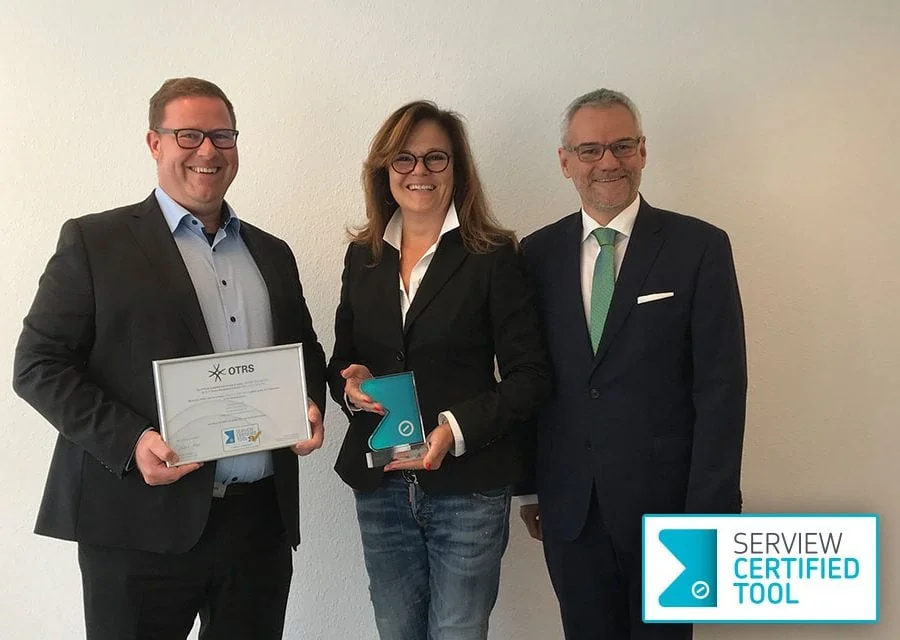

What does ITIL stand for?
ITIL stands for Information Technology Infrastructure Library (ITIL). It defines the framework of best practices for IT service management and support. ITIL ensures that services and processes are continuously improved, thereby increasing value creation throughout the company.
The Basic Principle of ITIL
At its most basic level, ITIL was developed based on the principle of aligning IT services with business needs. In short, IT must be able to optimally support business developments, potential growth and digital transformation.
The Evolution of ITIL
ITIL was first published by the Central Computer and Telecommunication Agency (CCTA), an English governmental agency that still supports ITIL framework vendor neutrality.
The beginnings of ITIL can be dated to the 1980s – an era in which IT experienced growing influence on many business areas. However, since technical improvements in companies entailed enormous costs, the UK-based “Government Information Technology Infrastructure Management Method” project was established with the goal of making IT processes many times more efficient and thus more cost-effective. This was the beginning of ITIL.
ITIL was intended to help IT organizations improve their services so that the team’s work became more cost-effective and efficient. The guidelines initially focused heavily on operations and were developed over the period from 1989 to 1996.
ITIL Framework Versions
To date, the ITIL framework has undergone four versions.
ITIL V1
was the first ITIL book and was published in 1989. It was not yet identified by a version number, so this is a bit of a misnomer.
ITIL V2
was published in 2000 and focused on the increasing importance of the relationship between the customer, IT service providers and their suppliers. In general, ITIL V2 emphasized a service-oriented approach.
ITIL V3
followed in 2007 and expanded the service-oriented approach to include a service lifecycle. In ITIL V3, the framework shifted the focus regarding services such that they began to be viewed as continuous processes.
ITIL 4
replaced ITIL V3 in February 2019. This is the most current version and is intended to enable ITSM teams to adapt their services to modern constructs, such as DevOps, Agile and Lean. With this iteration of the framework, the empahsis is on creating value alongside the customer.
The ITIL framework now consists of five ITIL books that cover the ITIL service lifecycle and describe a set of predefined practices, processes, functions and roles that correspond to the IT infrastructure of SMEs and enterprises in today’s world.
ITIL has become a broader way to think about how a specific organization's activities impact the business as a whole.
Implementing ITIL
The ITIL framework is intended to help companies align their processes and services with the needs of customers and employees in the best way possible. Through the years, IT, like other business areas, has become an important part of creating value for customers. What was once an orderly collection of “how tos” is now a framework that provides methods and processes that take into account how the activities of a particular department impact the entire company. It looks at the costs and consequences of new offerings and services holistically.
ITIL can be used by any organization that provides services internally or externally. ITIL helps to structure and continuously improve the way services are delivered.
The Benefits of ITIL in ITSM
By applying the ITIL framework in IT Service Management (ITSM), customers and service providers jointly define processes to ensure that they meet the needs of both parties.
By working together, everyone benefits from:
- Cost reductions
- Time savings
- Reduced errors
- Improved results, and
- Increased acceptance of changes throughout the company.
Main ITIL 4 Concepts
ITIL 4 essentially consists of two components that work together to establish the holistic approach of ITIL 4 in the company.
The Four Dimensions Model
The Four Dimensions of Model for service management highlights key business areas that need to be considered to be sure that value is created holistically across all areas. After all, it would not make sense to save small amounts of money in one business area if it means a huge increase in costs in another.
ITIL 4 defines the following four areas in the Four Dimensions Model
- Organizations and People
- Information and Technology
- Partners and Suppliers
- Value Streams and Processes
The ITIL Service Value System
The ITIL Service Value System (SVS) is the second component of ITIL 4. It defines the way value is created when using ITIL principles in the organization. The system includes:
- Identifying demand and opportunities
- Establishing guidelines and principles
- Creating value
- Optimizing continuously through application
With this system, organizations can employ a variety of project and team management models to keep day-to-day operations on track while ensuring that value is generated in a holistic way.
Using ITIL 4 in Areas Other than ITSM
The flexibility of ITIL 4 means that other organizations, such as HR or facilities management, could apply many of the principles in the latest ITIL release. For now, however, ITIL is still firmly entrenched in supporting the development of IT service management offerings.
Introducing ITIL to Your Company
Any organization, regardless of size, can benefit from adopting the approach and concepts of ITIL. ITIL practices describe ways to evaluate ideas for new and improved services so that they truly help all stakeholders and the organization as a whole.
The integration and application of ITIL in the enterprise can be divided into the following phases and is also described as the ITIL Lifecycle (or ITIL Service Lifecycle).
- ITIL Service Strategy: Strategy and goals of ITIL in the company
- ITIL Service Design: Design of processes, practices and responsibilities
- ITIL Service Transition: Implementation within the company
- ITIL Service Operation: Operation and compliance of the services and SLAs under the principles of ITIL
- ITIL Service Improvement: Identify and implement measures to improve IT processes and services and objectively measure the impact of these measures.
ITIL Processes
Traditionally, ITIL processes were defined by the framework. With ITIL v4, ITIL processes underwent a change and became known as ITIL practices. They were reworked and recategorized to offer IT teams more flexiblity, ensuring that they could adapt to changes as needed.
ITIL 4 defines 34 distinct practices – areas where ITIL can and should support business processes and workflows. Some of the primary “ITIL processes” that IT teams often begin using include:
- Problem management
- Incident management
- Availability management
- Change management
- Project management
- Risk management
- Information security management (ISMS)
- Service desk
ITIL and IT Governance
Consultants and IT professionals can help you answer these questions and create a roadmap for ITIL implementation. They will work with you to describe the practices and processes your organization needs to benefit from the ITIL framework.
And of course, there are many tools on the market to help you streamline different parts of your new service management approach. From process automation to CMDB to help desk software, it’s important to invest in tools that will make your ITIL implementation faster and easier.
When your organization is ITIL compliant, you can best oversee IT service management, increase productivity and make your IT processes much more efficient.
ITIL Certification
ITIL Foundation is the first step in getting started on your path to ITIL certification. The ITIL Foundation training program helps professionals understand how the ITIL framework can positively impact IT service management and add value for all stakeholders in your organization.
After completion of ITIL Foundations, continued education is available that addresses management and strategy topics. If you plan to tackle ITIL implementation without hiring a consultant, a certification course can be helpful.
Certified ITIL Tools
While some of the concepts in the ITIL framework may seem overwhelming when you’re just getting started, ITSM tools can help simplify things for your team. As mentioned above, ITSM software can offer built-in processes that automate many of the concepts that are set out by ITIL.
Software Certification Creates Security and Trust
Of course, it’s important to ensure that the software solutions are really ITIL compliant.
Service providers, such as SERVIEW GmbH, issue a seal of approval to software vendors when their software solutions are ITIL compliant. This is an important indicator of qualified products and services.
The certification process includes the evaluation of assessment sheets provided by the software vendor and a product demo session in which the functionalities of the software are presented. If the ITIL processes meet the requirements, the software vendor receives a seal approval.
To ensure independence, software companies do not pay a cent for the seal of approval. On the contrary, the only thing that matters is whether the products meet the requirements for SERVIEW ITIL certification.
SERVIEW CERTIFIEDTOOL is not a SERVIEW business model, it is a service to our customers.Michael Kresse, owner of SERVIEWSERVIEW
OTRS is a SERVIEW CERTIFIEDTOOL
OTRS AG is pleased to have been awarded the SERVIEW CERTIFIEDTOOL seal. We can optimally support our customers in IT Service Management with 8 verified ITIL processes. OTRS supports the requirements and best practices of ITIL.
Learn how OTRS improves your IT service management with certified ITIL processes.

OTRS is a SERVIEW CERTIFIEDTOOL.
Categories
- About OTRS Group (21)
- Automation (3)
- Corporate Security (26)
- Customer Service (31)
- Developing a Corporate Culture (12)
- Digital Transformation (53)
- General (79)
- ITSM (31)
- Leadership (22)
- OTRS in Action (8)
- Processes (5)
- Using OTRS (14)
